All about the density of mineral wool
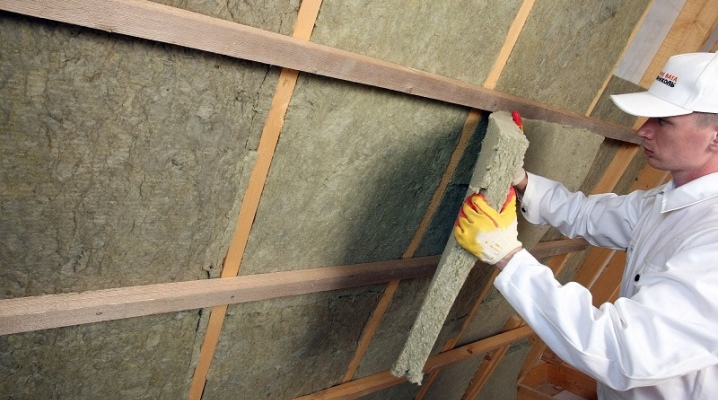
Mineral wool is a high-quality material for insulation, which also provides a pleasant indoor climate. The peculiarity of this insulation is that it allows air to pass through. One of the most important parameters to consider when choosing mineral wool is density. It directly affects the heat indicator. However, in addition to density, building characteristics and loads should be considered.
Types of mineral wool by density
Most often, when purchasing a material for insulating buildings, consumers look at its characteristics that affect operation. At the same time, physical properties, such as density, are forgotten. However, it is important to take this parameter into account, since it allows you to choose the right mineral wool. Any insulation contains air (normal or rarefied). The thermal conductivity coefficient directly depends on the volume of steam inside the heat-insulating material and the insulation from interaction with the outside air.
Mineral wool basically contains intertwined fibers. That's why the higher their density, the less air will be inside and the higher the thermal conductivity will be. Thus, when choosing a mineral insulation, it is necessary to imagine in advance for what purposes it will be used: insulation of the house, floor, interfloor partitions, roof, internal walls. Currently, there are four types of mineral wool.
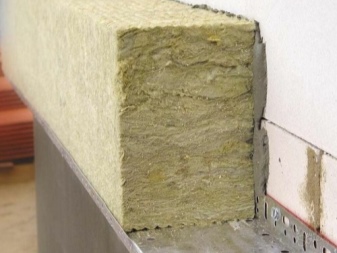

Mats
They have a density of up to 220 kg / m3. Moreover, their thickness can vary in the range of 20-100 millimeters. This variety is the most durable and is most often used in industry. Often, using mats, pipes are insulated, as well as equipment is insulated. In construction, mats are used very rarely.
Mineral wool in mats is a slab with a standard length of 500 mm and a width of 1500 mm. On both sides, such a sheet will be wrapped in a cloth based on fiberglass.
Reinforcing mesh or bituminous paper is also used for finishing.
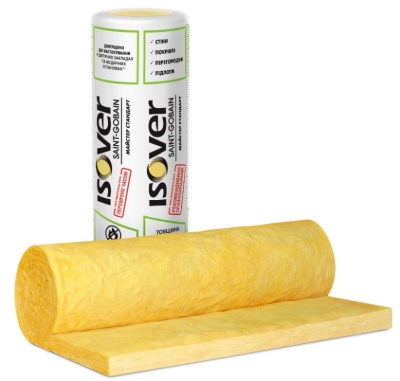
Felt
This type of mineral material has a density ranging from 70 to 150 kilograms per cubic meter. Such cotton wool is produced in sheets or rolls with synthetic impregnation. The latter allows you to increase the thermal insulation parameters. Often, felt is used to insulate a horizontal plane or engineering communication structures.
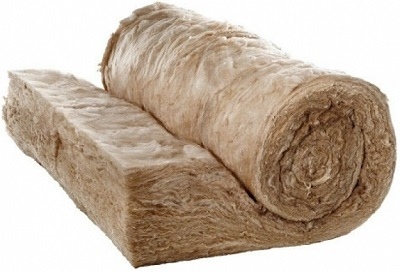
Semi-rigid slabs
This version of the insulation is obtained as a result of the use of a special technology, when bitumen or resin is added to the cotton wool, which is based on synthetic elements. After that, the material goes through the pressing process. It is from the force applied during this procedure that the density of this type of mineral wool depends - 75-300 kilograms per cubic meter. In this case, the thickness of the slab can reach 200 millimeters. As for the dimensions, they are standard - 600 x 1000 millimeters.
The scope of use of semi-rigid slabs is quite wide: horizontal and inclined surfaces... However, this type of insulation has temperature limitations. For example, sheets in which the binder is bitumen are only able to withstand temperatures up to 60 degrees.
Some types of filler in mineral wool can raise its temperature limit to 300 degrees.
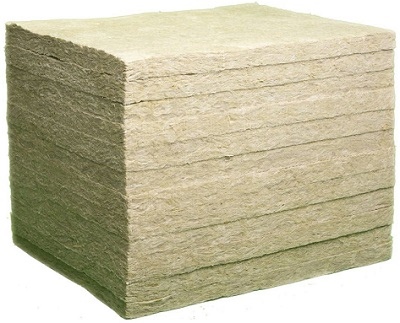
Rigid slabs
For this type of material, the density can be 400 kilograms per cubic meter with a thickness of 10 cm. As for the size of such a plate, it is standard - 600 by 1000 millimeters. Hard mineral wool contains synthetic resins (most of it). During the manufacturing process, the insulation is pressed and polymerized. As a result, high rigidity is achieved, which allows the use of sheets for walls and greatly facilitates their installation.
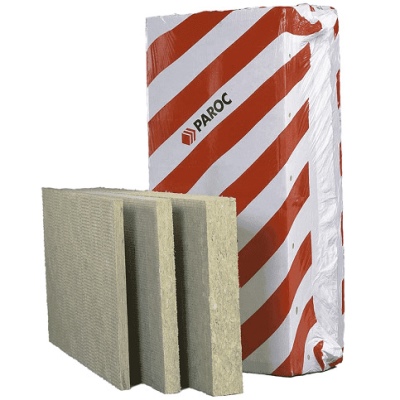
What mineral wool is needed in different cases?
When choosing a heater, it is also important to take into account the climate of your region. For example, for walls in areas with a temperate climate, sheets with a thickness of 80 to 100 millimeters are well suited. When the climate shifts towards the continental, monsoon, subarctic, maritime or arctic belt, the thickness of the mineral wool should be at least 10 percent greater. For example, for the Murmansk region, insulation from 150 millimeters is best, for Tobolsk - 110 millimeters. For surfaces without a load in the horizontal plane, an insulating material with a density of less than 40 kg / m3 will be appropriate. Such mineral wool in rolls can be used for the ceiling or for floor insulation along the joists. For the outer walls of industrial buildings, an option with a coefficient of 50-75 kg / m3 is suitable. Plates for a ventilated facade should be chosen more dense - up to 110 kilograms per cubic meter, they are also suitable for siding. For plastering, a facade mineral wool is desirable, whose density index is from 130 to 140 kg / m3, and for a wet facade - from 120 to 170 kg / m3.
Roof insulation is carried out at a height, therefore, a small mass of insulation and ease of installation are important. Mineral wool with a density of 30 kg / m3 is suitable for these requirements. The laying of the material is carried out using a stapler or directly into the crate with the use of steam barriers. In both cases, the layer of insulation on top needs finishing. The choice of floor insulation depends on the characteristics of the selected finish. For example, for sheet materials in the form of a laminate or board, thermal insulation with a density of up to 45 kilograms per cubic meter is suitable. A small indicator here is quite appropriate, since pressure will not be applied to the mineral wool due to its laying between the lags. Under the cement screed, you can safely lay an insulating mineral material with a density of 200 kg / m3. Of course, the cost of such a heater is quite high, but it fully corresponds to the quality and ease of installation.
When choosing mineral wool, it is important to remember that high density makes it overly heavy. This must be taken into account, for example, for a frame house, because a very large weight of thermal insulation can entail additional costs for high-quality reinforcement.
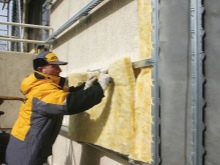
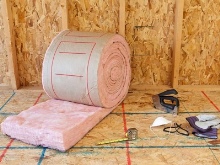
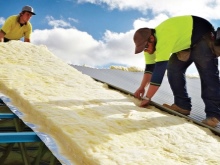
How to determine density?
It is imperative to choose the appropriate type of mineral wool after having read the information from the manufacturer. Usually, all the necessary characteristics can be found on the packaging. Of course, if you want to do everything very efficiently, then you can resort to a professional approach and calculate the density of the insulation. As practice shows, consumers select density and other parameters either at their own discretion, or on the advice of friends or consultants. The best option would be to contact a professional with the question of choosing a density.
The density of mineral wool is the mass of its cubic meter... As a rule, lightweight insulation with a porous structure is suitable for thermal insulation of walls, ceilings or partitions, and rigid ones for outdoor use. When the surface is without loads, then you can safely take plates with a density of up to 35 kilograms per cubic meter. For partitions between floors and rooms, interior floors, ceilings, walls in non-residential buildings, an indicator in the range from 35 to 75 kilograms per cubic meter is sufficient. External ventilated walls require a density of up to 100 kg / m3, and facades - 135 kg / m3.
It should be understood that the density limits should only be used where additional wall finishing will be carried out, for example, with siding or plaster. Between floors in concrete or reinforced concrete buildings, sheets with a density of 125 to 150 kilograms per cubic meter are suitable, and for load-bearing reinforced concrete structures - from 150 to 175 kilograms per cubic meter. Screed floors, when the insulation becomes the top layer, can only withstand material with an indicator from 175 to 200 kg / m3.
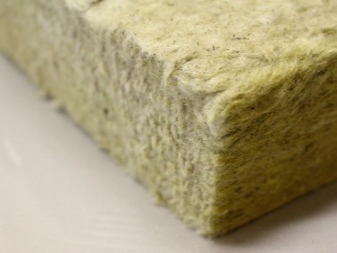
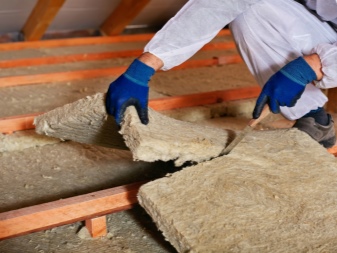













The wall thickness of the frame bathroom is 150 mm. I decided to fill the niches with three layers of stone wool 50 mm thick. "Pie": 1 slab with a density of 30 kg / cc, and at the edges two slabs of 80 kg / cc. I consider the option of several layers to be less thermally conductive, moreover, it does not give visible shrinkage of the material.
The comment was sent successfully.